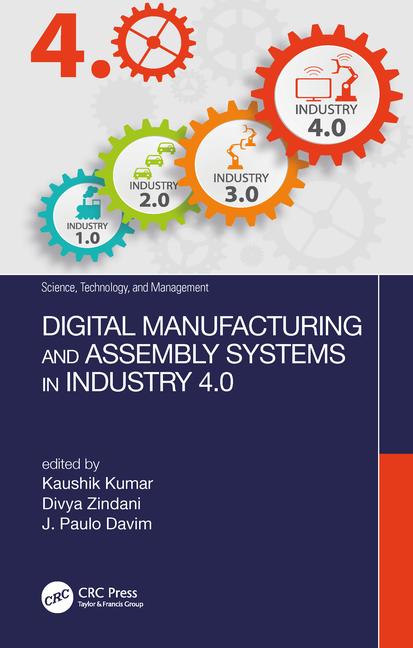Oil and gas equipment manufacturers face many unique challenges. For instance, swings in demand for pumps, compressors, drill bits, Christmas trees, wellheads and other products come from many different sources.
wellheads and other products come from many different sources.
Besides normal market demand changes, companies that produce oil and gas equipment must react to a high number of variable factors. Demand can be impacted by changes in legislation, foreign policy, political situations, oil and gas discoveries and the logistics of installing heavy equipment.
“In contrast to other industries that produce physical parts to customer demand, this industry is more project-driven, similar to the heavy construction industry,” says Kevin Duggan, a lean manufacturing consultant and founder of the Institute for Operational Excellence. The oil and gas equipment industry also is schedule-driven. Most manufacturers are willing to pay to get things expedited.
“While in the past, the equipment manufacturers have been more traditional and conservative approach to equipment, lately the industry has begun to accelerate through innovation,” says Duggan. “Using approaches as modular design and computer technology advances in equipment design are making this industry more cutting edge.”
Oil and gas equipment manufacturers are also harnessing the power of lean manufacturing to improve productivity and satisfy growing customer demand.
Because most drilling, pumping and processing equipment is complex and custom-built, low-volume, high-mix production processes are widely used in the industry.
Compared with the automotive and consumer goods industries, oil and gas equipment is built in very small quantities and in a specific configuration for an application. Much of the equipment is a design and build and not repetitive of previously produced equipment.
“This forces high demand on engineering resources and also a heavy integration of design engineering and manufacturing,” says Duggan. “Design for manufacturing methods and modular design have made significant improvements to this industry, where engineering is done on almost every customer order.”
Consumables such as standard pipes, elbows and valves can be built in a production run and put in small amounts of stock. However, Duggan says that these would still be built using the principles of mixed-model production (determining product family matrices, work content variation, equipment needed by family and demand, interval calculations for mix, finished good strategies and Heijunka scheduling), due to the mix of part numbers.
“Compared with other industries, assemblies are not done on work benches or assembly lines,” says Duggan. “Operators normally have to walk around the product itself to build it, similar to the construction of a building on a lot.
“Therefore, production to takt time is not as easily accomplished as it is in other industries,” adds Duggan. “However, these large machines still must be built in flow—even if the physical machines are not moved on a chain conveyor or moving line.
“To achieve this, different techniques are needed to create pitch (a physical way for operators to know if equipment assembly is achieving takt time),” Duggan points out. “These techniques include balancing work to timed team assemblies, presenting material at preset times, kitting material by assembly time, and color-coded visual flags that show the timing of long takt time builds.”
The high-mix, low-volume production environment common in the oil and gas industry presents challenges to engineers. “One of the challenges is truly understanding customer demand in terms of mix,” says Duggan. “Establishing an ‘interval’ in a high-mix, low-volume environment is key to dealing with this.”
“The interval is how long it will take (or what is our ability) to produce all the part numbers in a product family,” explains Duggan. “This can be difficult to establish in the oil and gas industry because of its high-mix, low-volume nature, long lead times, and high customization of parts.”
Traditional techniques used for production and creating flow, such as balancing operators to create continuous flow or assembly lines, won’t easily work in high-mix, low-volume environments.
Some other challenges that engineers in the oil and gas equipment industry faces are:
*Trying to optimize resources to produce parts while customers are changing their forecasts.
*Managing changeovers to produce different parts in small quantities.
*Effectively utilizing equipment for efficiency and cost-effectiveness.
*Trying to forecast raw materials on a global basis.
*Achieving consistent lead times when assemblers don’t know what is being produced in front of the next unit.
*Varying cycle times, varying setup times and variation in worker abilities in a high-tech environment cause variation in lead times.
The oil and gas equipment industry is not as far along on its lean journey as automotive, medial and consumer goods manufacturers. However, Duggan says engineers are beginning to realize the benefits of lean and operational excellence and what can be achieved in their complex industry. “While its adoption of these techniques is a little behind other industries, early gains have fostered a desire to learn and apply more knowledge quickly to see additional results,” he points out.
As demand builds and new oil or gas fields are found, companies are aggressively adopting lean manufacturing principles to help them meet customer demand.
“They are realizing that lean and operational excellence apply to their industry, but not the vanilla automotive techniques,” claims Duggan.
“They need much more advanced techniques, such as establishing takt capabilities (instead of the typical takt or customer demand rate), mixed model production and creating flow through shared resources,” adds Duggan. “[Oil and gas equipment manufacturers also need help] creating flow in the business processes using workflow cycles and integration events, and a robust method of lean product development and flow through engineering departments.
“Now that the industry has proof that these advanced techniques can handle the challenges of applying lean and operational excellence in oil and gas, the education and application of these principles has begun, bringing results to this industry similar to what automotive manufacturers have achieved,” says Duggan.
Large oil and gas equipment manufacturers have incorporated continuous improvement and lean manufacturing principles to cut production costs and improve productivity. “The oil and gas industry has applied much more in-depth design principles for value stream improvement,” says Duggan. “While other industries run kaizens or continuous improvement events where their people brainstorm to spearhead improvement, oil and gas equipment producers map their existing product flows, then engineer or design future state flow using principles and tenets.”
Those principles teach guidelines that must be used to design a future state. They include advanced concepts, such as product family matrices for determining families for flow, different modes of takt time calculations, machine loading, interval analysis and different methods for FIFO, such as sequenced FIFO and offset sequencing.
Duggan says he recently encountered a large oil equipment manufacturer that always incurred a bottleneck of parts in its nondestructive testing (NDT) department. “Many meetings were needed to prioritize and expedite parts through the NDT area,” says Duggan. “Hot lists and schedule changes were the normal way of working in order to push work through the NDT area.”
An attempt to use the lean concept of supermarkets, which is widely used in the automotive industry, was considered during a kaizen but dismissed due to the high customization of parts and the amount of stock needed.
“After learning the principles of flowing through shared resources, calculations were performed, intervals determined and sequenced FIFO lanes established,” says Duggan. The result was a ‘guaranteed turnaround time’ for the NDT process. Any part in an input FIFO lane would flow through the process within a guaranteed amount of time.
“As a result, flow was established without supermarkets, eliminating scheduling, hot lists and the bottleneck,” adds Duggan. “Visual indicators were also established so each assembler could tell if the flow was on time to how it was designed using these principles. The success in this area quickly spread to other areas throughout the operation as well.”
Oil and Gas Industry Adopts Lean Manufacturing

Looking for a reprint of this article?
From high-res PDFs to custom plaques, order your copy today!







